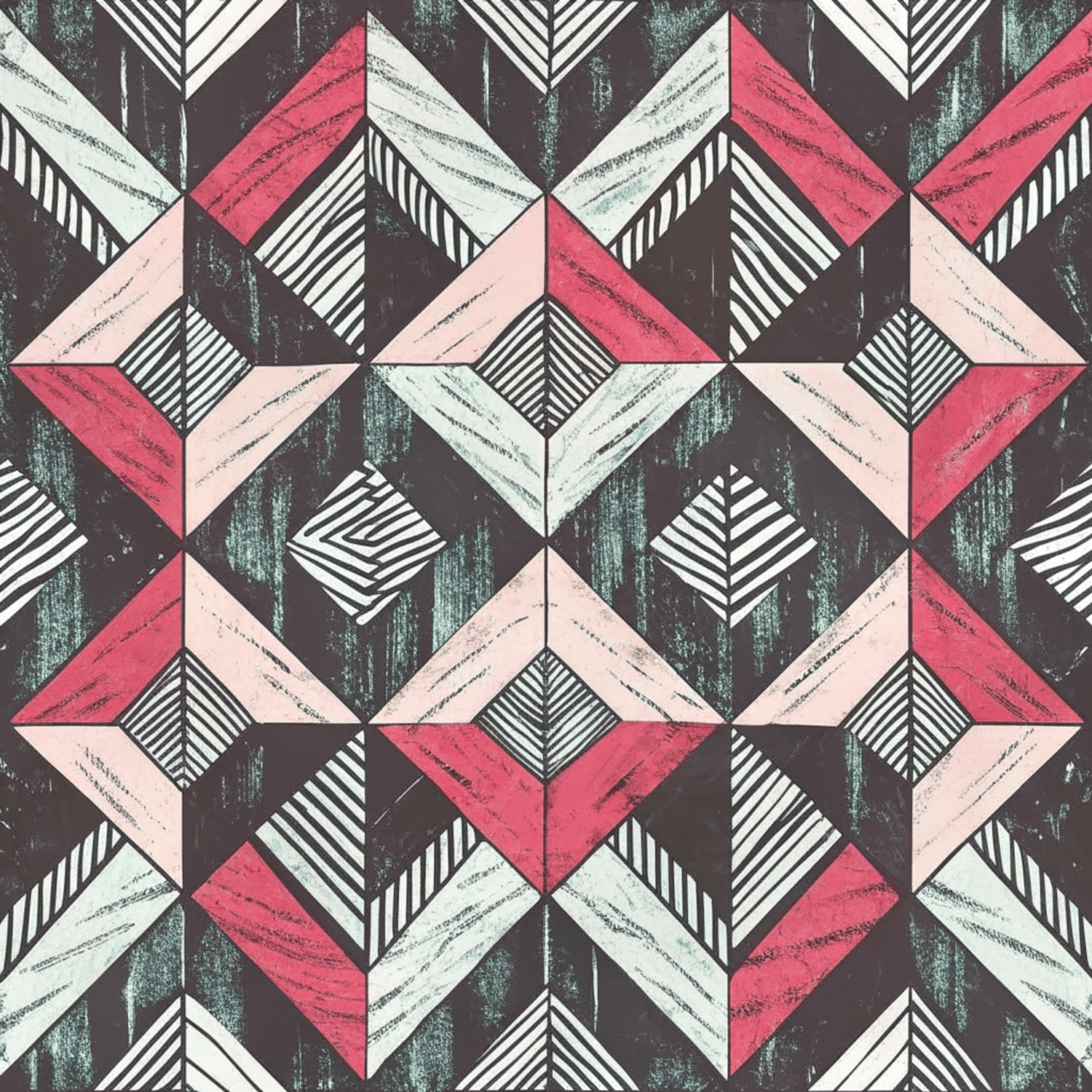In the dynamic world of design, **seamless patterns** have become a quintessential element. Whether you're a graphic designer, a fashion enthusiast, or a home decor aficionado, unique seamless patterns can transform your work, adding depth and visual intrigue. Seamless patterns are repetitive designs that can be tiled without visible borders, creating a continuous flow that is visually appealing. In this blog, we will dive into the fascinating realm of seamless patterns, exploring their creation, uses, and the immense value they bring to various design fields.
## What Are Seamless Patterns?
Seamless patterns, also known as tileable patterns, are designs that repeat without interruption. These patterns are crafted so that when placed side by side, they form a continuous and unbroken design. This makes them perfect for a variety of applications, from textiles and wallpapers to digital backgrounds and packaging.
### The Art of Creating Seamless Patterns
Creating seamless patterns involves a mix of creativity and technical skill. Designers start by conceptualizing a single tile that will be replicated. The key to a successful seamless pattern is ensuring that the edges of the tile align perfectly with each other when repeated. This process can be done manually or with the aid of graphic design software like Adobe Illustrator or Photoshop.
### Tools and Techniques for Designing Seamless Patterns
There are numerous tools and techniques available for designing seamless patterns. Some popular methods include:
- **Using software tools:** Programs like Adobe Illustrator and Photoshop are equipped with features specifically for pattern creation. Illustrator's Pattern Tool and Photoshop's Offset Filter are particularly useful.
- **Drawing by hand:** Some designers prefer to sketch their patterns by hand before digitizing them. This method can add a personal touch and unique flair to the design.
- **Digital drawing tablets:** Devices like Wacom tablets allow designers to draw directly into design software, combining the precision of digital tools with the fluidity of hand drawing.
## The Versatility of Seamless Patterns
Seamless patterns are incredibly versatile and can be used across a multitude of mediums. Let's explore some of the most popular applications:
### Fashion and Textiles
In the fashion industry, seamless patterns are a staple. They are used to create everything from clothing fabrics to accessories. Unique seamless patterns can set a brand apart, providing a distinctive look that is immediately recognizable.
### Interior Design
Interior designers utilize seamless patterns to enhance the aesthetics of a space. Wallpapers, upholstery, and even flooring can benefit from the continuous flow of a well-designed pattern. The right pattern can transform a room, making it feel more cohesive and stylish.
### Graphic Design and Branding
In the realm of graphic design, seamless patterns are used for backgrounds, websites, and branding materials. They add a layer of complexity and professionalism to designs, helping brands to stand out in a crowded market.
### Packaging Design
Packaging is another area where seamless patterns shine. They make products more attractive on the shelves and can convey a sense of quality and uniqueness. Patterns can be used on everything from boxes and bags to labels and wrapping paper.
## Benefits of Using Unique Seamless Patterns
Using unique seamless patterns offers numerous benefits. Here are some key advantages:
### Visual Appeal
The most obvious benefit is the visual appeal. Seamless patterns create a pleasing and cohesive look that draws the eye. This can be especially important in marketing and branding, where first impressions are crucial.
### Brand Identity
Unique patterns can help establish a strong brand identity. When a pattern is distinct and consistently used, it becomes associated with the brand, making it more recognizable to consumers.
### Versatility
Seamless patterns can be applied to a wide range of products and materials. This versatility makes them a valuable asset for designers in various fields.
### Professionalism
Using well-crafted seamless patterns can elevate the perceived professionalism of a design. It shows attention to detail and a commitment to quality, which can enhance a brand’s reputation.
## How to Choose the Right Seamless Pattern for Your Project
Selecting the right seamless pattern for your project is essential to achieving the desired outcome. Here are some tips to guide you:
### Consider Your Audience
Think about who will be seeing your design. Different patterns evoke different emotions and associations. For example, a playful pattern might be perfect for a children’s brand, while a sleek, geometric design could be ideal for a tech company.
### Match the Pattern to the Product
Ensure that the pattern complements the product it will be applied to. A busy, intricate design might work well on a small accessory, but it could be overwhelming on a large piece of furniture.
### Test Different Options
Don’t be afraid to experiment with multiple patterns. Sometimes it takes a few tries to find the perfect fit. Use mock-ups to visualize how different patterns will look in real-world applications.
### Pay Attention to Trends
While it’s important to stay true to your brand’s identity, keeping an eye on current design trends can provide inspiration and ensure your patterns feel fresh and modern.
## Popular Types of Seamless Patterns
There are countless types of seamless patterns, each with its own unique charm. Here are some popular categories:
### Geometric Patterns
Geometric patterns are characterized by the use of shapes like circles, squares, and triangles. They can be simple or complex, and are often used in modern and minimalist designs.
### Floral Patterns
Floral patterns feature flowers and botanical elements. They are versatile and can range from delicate and subtle to bold and vibrant, making them suitable for a variety of applications.
### Abstract Patterns
Abstract patterns don’t follow a specific theme or subject. They can be highly creative and unique, often using unconventional shapes and colors to create a striking visual effect.
### Retro and Vintage Patterns
Retro and vintage patterns draw inspiration from past eras. These patterns often evoke a sense of nostalgia and can add a timeless quality to designs.
### Ethnic and Cultural Patterns
Ethnic and cultural patterns are inspired by traditional designs from around the world. These patterns can add a rich, cultural element to a design, making it more meaningful and distinctive.
## Tips for Creating Your Own Unique Seamless Patterns
If you’re inspired to create your own seamless patterns, here are some tips to get you started:
### Start Simple
Begin with simple shapes and designs. As you become more comfortable with the process, you can experiment with more complex patterns.
### Use References
Look at existing patterns for inspiration. Pay attention to how different elements are arranged and how the pattern flows.
### Experiment with Color
Color can dramatically change the look and feel of a pattern. Don’t be afraid to try different color combinations to see what works best.
### Seek Feedback
Share your patterns with others and ask for feedback. Sometimes a fresh perspective can help you see things you might have missed.
### Practice, Practice, Practice
Like any skill, creating seamless patterns takes practice. The more you create, the better you’ll become.
## Real-Life Examples of Unique Seamless Patterns
Let’s take a look at some real-life examples of how unique seamless patterns are used effectively:
### Designer Clothing Lines
Many high-end fashion brands use unique seamless patterns to set their collections apart. For example, a luxury brand might use a custom floral pattern on a silk scarf, creating a signature piece that stands out.
### Boutique Packaging
Small boutique brands often use seamless patterns on their packaging to create a memorable unboxing experience. A beautifully patterned box or bag can leave a lasting impression on customers.
### Interior Decor Collections
Interior designers and home decor brands use seamless patterns to create cohesive collections. For instance, a set of patterned cushions, curtains, and rugs can transform a room into a coordinated, stylish space.
### Digital Products
Web designers use seamless patterns as backgrounds for websites and digital products. A unique pattern can make a website more visually interesting and engaging for visitors.
## Conclusion
In the world of design, **unique seamless patterns** are a powerful tool. They offer endless possibilities for creativity and can enhance the visual appeal of any project. Whether you’re designing fashion, home decor, packaging, or digital products, the right seamless pattern can make all the difference. By understanding the principles of pattern creation and exploring different styles and applications, you can elevate your designs and create something truly special. So, dive into the world of seamless patterns and let your creativity flow!
Seamless patterns are more than just a design element; they are a way to express individuality and create cohesive, captivating visuals. Embrace the potential of seamless patterns and watch your designs come to life in ways you never imagined.


